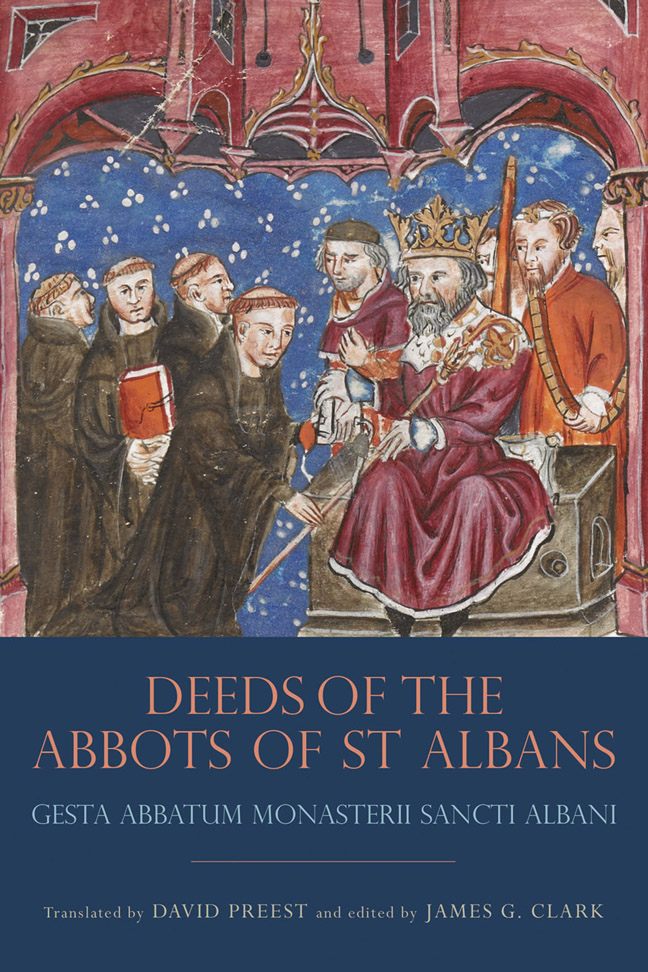Book contents
- Frontmatter
- Contents
- List of Illustrations
- Acknowledgements
- List of Abbreviations
- Introduction
- The Translation and its Sources
- The Deeds of the Abbots of St Albans
- Appendix A Thirteenth-Century Précis of the Deeds of the Abbots of St Albans: British Library, MS Cotton Vitellius a XX
- Bibliography
- Index
30 - Thomas De La Mare
Published online by Cambridge University Press: 17 February 2024
- Frontmatter
- Contents
- List of Illustrations
- Acknowledgements
- List of Abbreviations
- Introduction
- The Translation and its Sources
- The Deeds of the Abbots of St Albans
- Appendix A Thirteenth-Century Précis of the Deeds of the Abbots of St Albans: British Library, MS Cotton Vitellius a XX
- Bibliography
- Index
Summary
Michael was succeeded by Thomas de la Mare, a good man by a good man, a holy man by a holy man, a man of sense and wisdom by a man of sense and wisdom. As far as this world's glory is concerned, he was of noble birth, for his father was a famous knight, and he begat him on his lawfully married wife who was also the daughter of a knight. His father was called Sir John and his surname was de la Mare. There were several knights of high birth among his close kin, for example Sir William Montagu, earl of Salisbury, Sir William de la Zouche, lord of Haringworth, Sir Thomas Grandison, knight, and master Thomas Grandison, bishop of Exeter, all of them notable and celebrated men. Besides these he had other kinsmen and relations with the same surname, and other knights of lesser fortune, but still rich and powerful, Sir Richard de Havering, Sir John St Leger, Sir John de Argentein, Thomas Bassingbourn and some others whose names I omit for brevity's sake. His mother, known as Lady Johanna, was the daughter of that illustrious, vigorous knight of fair fame, Sir John Harpsfield, and so not less nobly born than her husband.
Thomas was a fitting son for such parents, seeing that he added lustre to such a noble line by his upright character, deeds of worth and the successes of his virtues. His parents produced many children, but in a marvellous fashion it was Thomas whom they loved above the others, looking after him more carefully and cherishing him more tenderly. For his face had a lively expression and all his features were so put together that nature herself seemed to have put the finishing touches to his appearance. In his younger years his complexion, a handsome mixture of pink and white, won the affection of those who saw it. Although his head was oblong, it was not enough so to be called a fault of nature and his face had a pleasantly formed nose. His long arms ended in moderately fleshy hands with long, slender fingers. In fact all the features which make for a completely beautiful body had been given to him by nature's artifice.
He had a mind which matched his body and which was always seeking after the best.
- Type
- Chapter
- Information
- The Deeds of the Abbots of St Albans<i>Gesta Abbatum Monasterii Sancti Albani</i>, pp. 759 - 933Publisher: Boydell & BrewerPrint publication year: 2019

